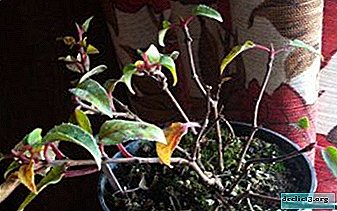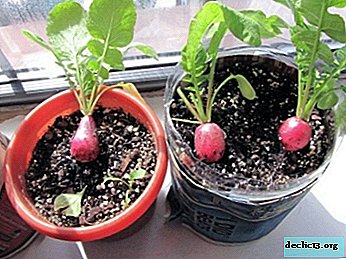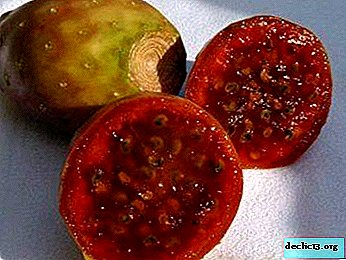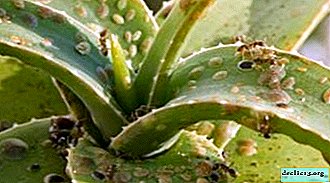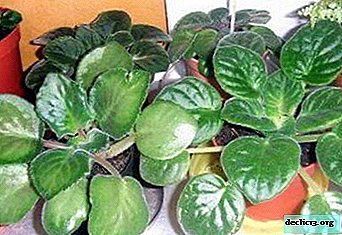How to save an orchid from mold on the roots, leaves and other parts of the plant?

There are many types of flowers. However, one of the most beautiful is, of course, an orchid. Orchid itself is an unpretentious flower and adapts to different conditions.
With improper storage and care, this unpleasant thing can form such an unpleasant thing as mold.
Why white and black mold appears in the pot, on the leaves and roots and how to treat the plant - we will understand together. You will also see how this disease looks on a plant.
Appearance
Mold is a plaque that is formed by molds on the surface of plants. The so-called "seeds" of mushrooms (scientific spores) in free flight move around the room and can easily infect not only flowers, but also various surfaces.
Color varies from light gray to greenish. Mold looks like a hairy crust on the surface of a flower.
Reference! Often, mold can appear on the roots of an orchid, but the roots, stem and leaves of the flower itself are susceptible to this sore.Why does the plant mold?
Mold appears from excess moisture and hot temperatures in the room. Excessive watering of the substrate or frequent spraying of orchids also contributes to the appearance of this phenomenon. Often, mold can be brought straight from the flower shop, where frequent watering is used for the best kind of flower. If you find this muck on a flower - do not immediately panic.
Possible consequences
If this fungal disease is detected on the flower on time, then the consequences are not particularly deplorable, the right treatment - and the flower will again please the eye. If you start the state, then the flower may simply die.
How to get rid?
Let us consider in more detail what to do in this situation, how to deal with the formation of this disease in various parts of the flower.
On the leaves
 There are two types - white and black.
There are two types - white and black.
If white mold appeared on the surface and in the axils of the leaves - this is the initial stage of the disease. You can fight it with a solution of copper sulfate. To do this, take a teaspoon of vitriol and dilute in 2 liters of water. It should turn out a pale blue solution. They should wipe the leaves, especially carefully in places of greatest accumulation of mold. Or spray 2 times a day until the plaque disappears.
If black mold has already appeared on the flower, then it is better to carefully cut the affected leaves, and wipe the cut points with the same solution of vitriol.
On the roots
This type of fungus is harder to fight.
- First of all, it is necessary to completely dry the substrate in which the orchid grows.
- Then it is recommended to thoroughly dig the soil, remove the flower from the pot and thoroughly rinse the damaged areas (recommended water temperature is 35 degrees), if dried roots are found, then it is better to carefully trim them.
- The treated flower (stems and root) is placed in a fungicide solution for 15 minutes.
In the substrate
Moldy soil is best disposed of.. Before planting an orchid in a new substrate, it is necessary to soak it (soil) in boiling water for about 15 minutes. After that, wait until it has completely dried and only then fill the container where you place the orchid.
It is recommended to put 3 crushed tablets of activated carbon or wood bark into the substrate. After planting, it is not recommended to water the orchid for about 3-5 days. This is done to heal the damaged areas and not to form new problem areas. It is also advisable to place the orchid in a well-lit dry place.
Below you can watch a video that tells what to do with the orchid mold:
If the whole plant is affected
 If the flower is completely covered with mold, then you can try using a sharp knife to carefully cut the mold, then treat the damaged areas with a solution of copper sulfate (as described above).
If the flower is completely covered with mold, then you can try using a sharp knife to carefully cut the mold, then treat the damaged areas with a solution of copper sulfate (as described above).
It is also recommended that the flower be transplanted into another pot with a new substrate, previously disinfected. After that, do not water the flower for 5 days and keep it in conditions with minimal air humidity, it is advisable that direct sunlight fall. Even in this case, you can use ultraviolet lamps, warm the orchid with them.
Advice! The main thing is not to overdo it, so as not to get a thermal burn of the flower. If these measures did not help, then the flower needs to be disposed of, it can no longer be helped by anything, no matter how sad it may sound.How not to treat a flower?
- In no case should you allow excessive humidity in the room where the flower is located.
- Do not overdo the chemicals used in anti-mold.
- Although drying and a sunny place for treating a flower is recommended, one should not forget that prolonged exposure to direct sunlight (especially in the summer hot season) can lead to a thermal burn of a tender orchid.
- If you use a solution of copper sulfate or fungicide, then you should not allow a high concentration of these chemicals, since you can cause a chemical burn of the flower.
Prevention
To do this, make drainage holes in the pot where the flower grows. The substrate in which the orchid is located needs to be dried occasionally, that is, for several days do not water it. It is best to use clean filtered water for irrigation.
Occasionally add a weak solution of potassium permanganate to water for irrigation (the color should be pale pink, not brighter). A couple of tablets of activated carbon or wood bark can sometimes be added to the substrate for an orchid. Observe temperature conditions. The optimum temperature is 22-25 degrees. Avoid high humidity and it is best to place the flower in a sunny place.
Care after treatment
 An orchid that has suffered a fungal disease is best placed for a while away from other plants. It is desirable that this is a dry, warm, well-ventilated area. Provide flower access to the sun. Also, after treatment and removal of mold, it is best not to water the flower for several days, it is necessary to periodically loosen the soil in which the orchid grows.
An orchid that has suffered a fungal disease is best placed for a while away from other plants. It is desirable that this is a dry, warm, well-ventilated area. Provide flower access to the sun. Also, after treatment and removal of mold, it is best not to water the flower for several days, it is necessary to periodically loosen the soil in which the orchid grows.
The renewed substrate can be treated with a solution of foundationazole (two grams per liter of water). Twice a month it is recommended to breed 0.5 teaspoon of citric acid in a glass of water and water the plant with this solution. Some gardeners recommend dropping a few cloves of garlic in a pot with an orchid after watering. They need to be kept there until the soil has completely dried after watering and then removed.
You can also use dried citrus peels.. Put them around the flower for a couple of days.
So, we examined why the roots and other parts of the orchid are moldy and what to do about it. The most important thing is not to panic when detecting signs of this ailment, but to help the flower in a timely manner. Regularly check the flower for mold symptoms and follow simple plant care rules. Periodically carry out the prevention of orchids and then it will delight with its color for a long time.







